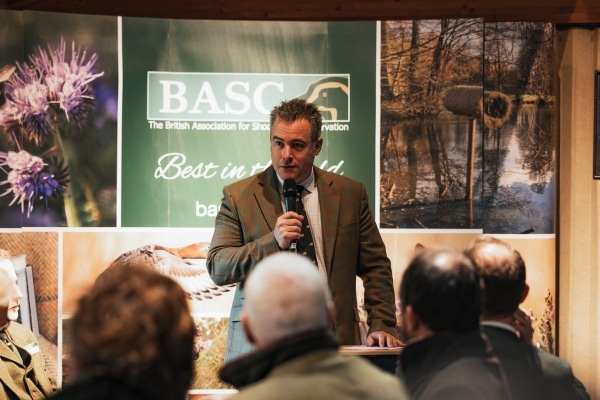
Leaving the ultimate legacy
“What sets us apart is that we’re not just spectators” – BASC chairman Eoghan Cameron shares his thoughts on the vital role of shooting’s people in managing the British countryside.
Get information on the legal shooting season for mammals and birds in the UK.
Apply for funding for your project or make a donation today
Comprehensive information and advice from our specialist firearms team.
Everything you need to know about shotgun, rifle and airgun ammunition.
Find our up-to-date information, advice and links to government resources.
Everything you need to know on firearms law and licensing.
All the latest news and advice on general licences and how they affect you.
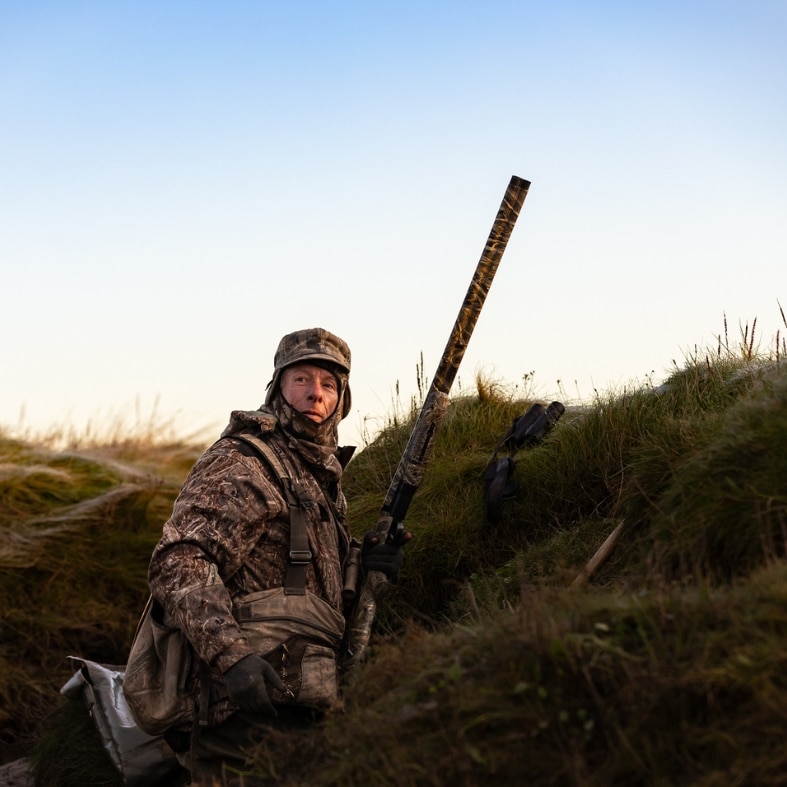

Collaboration is key when it comes to preserving wildfowling, and the hallowed mud of Caerlaverock is a shining example of what can be achieved by working together. David Gilbert tells the story…
The Solway Estuary has long been a mecca for wildfowlers but nowhere is more synonymous with the sport than Caerlaverock in south west Scotland. Lying at the mouth of the River Nith, on the east bank, it sits below the brooding mass of 1,870 foot Criffel. The area was immortalised in the books of Bill Powell; My Wild Goose Chase and The Grey Geese Call. It has attracted wildfowlers from far and wide, seeking not only wildfowl that overwinter here, but the solitude of mud and merse.
In 1957 Caerlaverock was declared a Nature Reserve by the then Duke of Norfolk; an area where farming, conservation fishing and wildfowling could work in harmony with nature conservation. The reserve now covers an area of 32 square miles, taking in important and sensitive roosts on the Blackshaw and Priestside Banks.
It is the winter home of the Svalbard barnacle goose population, which has grown from numbers counted in their hundreds in 1957 to tens of thousands nearly 70 years later. Add to this the numbers of other birds frequenting the reserve, such as marsh and hen harrier, peregrine, merlin, and barn owl, and the conservation benefits of this arrangement are clear to see.
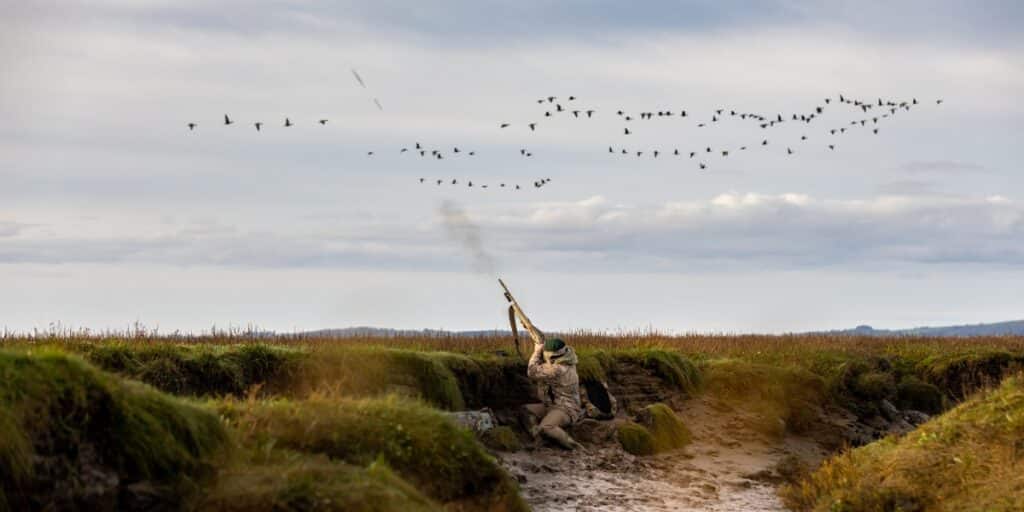
Now governed by strict byelaws, a small area of merse is allocated for wildfowling and lies between Castle Corner and Hollands Farm, to the south of Castle Wood. The shooting is overseen by the Caerlaverock Panel, whose representatives include landowner Caerlaverock Estate, the leaseholder NatureScot, BASC, SACS, Caerlaverock Wildfowlers and Scottish Solway Wildfowlers. Shooting permits are issued by NatureScot who, in 2019 when under extreme financial pressures, felt the need to call a halt to wildfowling.
After extensive discussions with the two local BASC affiliated wildfowling clubs, agreement was reached for members to step in to help with wardening. NatureScot now provides a part-time warden for two thirds of flights and Caerlaverock Wildfowlers and Scottish Solway Wildfowlers cover the remaining third. Consequently, wildfowling on this iconic site is preserved and continues to flourish under this joint initiative.
Wildfowling at Caerlaverock is strictly controlled, commencing on 1 October, when the cattle needed to maintain habitat have been removed. It runs through the remainder of the traditional fowling year to 20 February.
Season permits are issued to have commented on this, as they benefit from the knowledge of practising wildfowlers more likely to be out on the merse with them for a flight than watching with binoculars from afar. This was a point agreed early in the negotiations to assist NatureScot.
Caerlaverock is a large merse and rarely crowded. It is interlaced by deep creeks where cover abounds and, depending on the tide and weather, geese can be sitting very close in.
A word of warning, though, for the novice; barnacle geese are present in their thousands. There is rarely a flight when they are not over you in significant numbers. Furthermore, they are often intermingled with pinks, so your identification in the half-light of dawn or dusk has to be perfect.

On a recent trip to the area, Chris Wright of the BASC Wildfowling team and Cameron Balfour of BASC Scotland had the opportunity to take a flight with me. With the group was Russell from ARC Photography to record the event. Meeting in the car park at 6am I checked permits (there are no exceptions) and wildfowling kit was donned.
I chose a spot where I was hopeful of a shot, although it was far from ideal wildfowling weather. The sky was clear and the moon was up. Not a breath of wind stirred the trees on the 10-minute walk through Castle Wood to the access point.
Here watches were checked and a few minutes wait were in order until access time was reached. During that time the faint chatter of geese could be heard. Bearings at Caerlaverock are usually easily taken as the lights on the English side act as a guide, if you know what to look for! In particular, the red lights of the masts at Cardurnock on Bowness Common twinkle as if within touching distance.
The walk across the featureless Old Merse involves a zig zag between various ditches before hitting the cattle fence on the edge of the New Merse. Although other areas of coast on the Solway have suffered from significant erosion, this merse is increasing as the mud builds up on the existing reed, grass and other vegetation.
Eventually, able to drop into a six-foot-deep gully with almost vertical banking for cover, Chris and Cameron had the opportunity to split up about 50 yards apart, with Russell in the middle and me sitting back.
As with many morning flights, now was the time to savour the dawn as the world awoke to a new day. The sun began to rise in front and to the left, casting the Lakeland fells opposite into glorious silhouettes, particularly Blencathra.
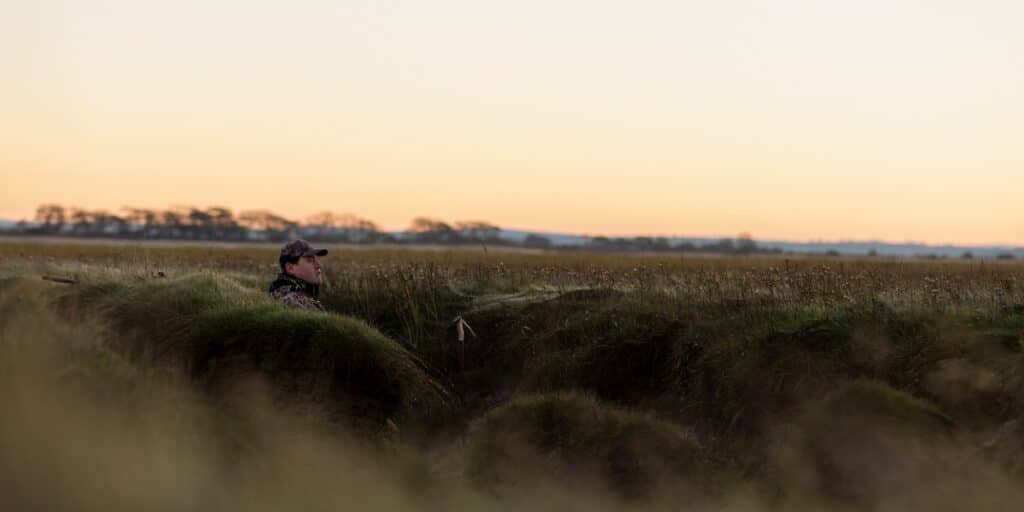
While Caerlaverock is not a prolific duck marsh, some early morning wigeon jinked between the Guns, seemingly affronted at the intrusion into their world. With frosted grass and a clear sky, it was a cold wait while the sun backlit the clouds with a rosy glow. Goose chatter increased, particularly local residents and visitors’ tickets on a daily basis.
Access to the shooting zone, comprising the green merse only, is available from one hour 15 minutes before sunrise until 10am and 3pm until one hour and 30 minutes after sunset. Times are strictly adhered to, as is the maximum 50-yard range limit. This control has gained Caerlaverock a high reputation and many visitors return for this reason alone. Although the Solway may, rightly or wrongly, be said to have a poor reputation, this cannot be said for Caerlaverock.
When you arrive, whether as a season ticket holder or visitor, you will be met with a cheery greeting from one of the monitors or warden while your ticket details are checked. As monitors we are not there merely to enforce rules.
We are not available as guides but we will help with advice on access, areas where cover can be found and recent wildfowl movements. Many visitors are the barnacles which tend to sit closer in than pinks. An occasional single goose could be heard crossing the merse, but nothing that offered the chance of a shot.
As the stars faded and the sun climbed above the fells, the geese began to move. Flighting out of the sun to the left, they were silhouetted but indistinguishable unless they called, often when they’d passed the line of artillery.
By 8.30am pinks were on the move in numbers but largely away to the left, failing to cross the merse and offer a shot. On other occasions, last-minute disappointment abounded as the geese crossing the ditch were identified as barnacles.
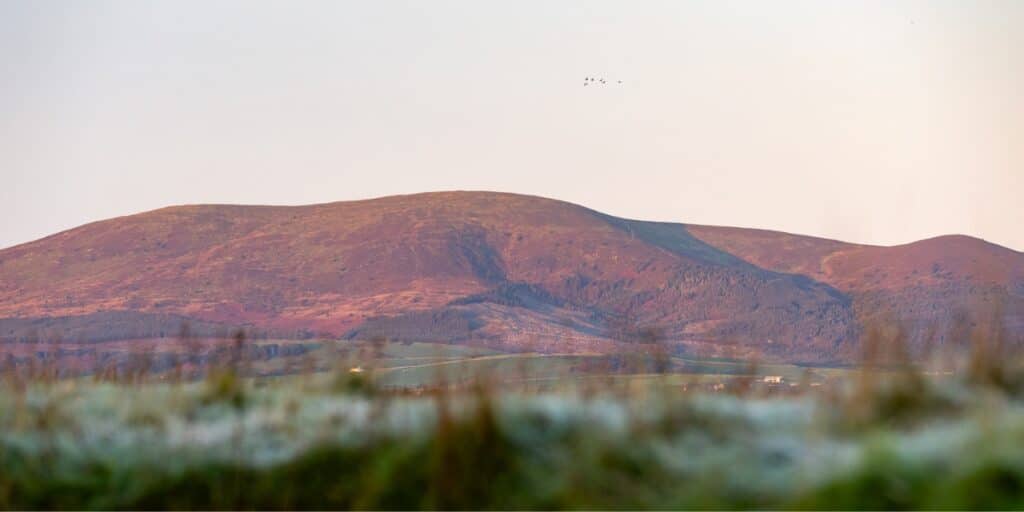
Eventually a couple of skeins of pinks headed toward the Guns, calling as they came. The first couple were just too high. We always say: “If you have to think whether a goose is less than 50 yards up it is most certainly higher!”
Finally, one small skein crossed over Chris in range. He was up and managed to get three shots, hitting one goose hard but not quite hard enough. As it fell from the skein, it peeled out to the right and onto the mud a couple of hundred yards out. It was too far to send the dog immediately but would be picked at the end of the flight.
Geese continued to flight to 9.30am and beyond but no further clear chances presented themselves. So, with a goose to pick, it was time to pack up to ensure we were out of the shooting zone by 10am.
I set off to pick the goose with my favoured wildfowling dog, Ben, who had been patiently lying below the lip of the ditch, waiting for action. It was a trek out across the mud until I could get Ben’s attention on the goose. Once he had seen it, though, he was off to chase it down and collect it a few hundred yards out. It was a long retrieve on a very big gander, so a lung-busting run back even for a big labrador. As we walked off the merse, geese were still flighting and, seemingly unconcerned with wildfowlers present, flew directly overhead and inland to feed.
The tramp back across the merse and through the wood helped return blood to numb fingers and toes, warmed by the rising sun. Chris was told he was one of the fortunate few to bag a Caerlaverock pink on his first trip out. Many visiting Guns have returned year after year without that bonus, but return they do to enjoy the experience that is wildfowling in the shadow of Criffel.
David Gilbert is Scottish Solway Wildfowlers’ chairman and monitor.
Permits available: Single day or week. Shooting season commences from 1 October.
No fee but permit holders must return permit on expiry, whether or not it has been used, and include all bag details and details of attendance on days for which it is issued. The maximum block which can be booked is two weeks at any one time. Applications should be made at least one week before permit is required and must include shotgun certificate number, name of issuing constabulary and BASC membership number.
Application forms are available:
The issuing officer:
Tel. 01738 458 678
NatureScot, Greystone Park, 55/57 Moffat Road, Dumfries DG1 1NP
Website


“What sets us apart is that we’re not just spectators” – BASC chairman Eoghan Cameron shares his thoughts on the vital role of shooting’s people in managing the British countryside.
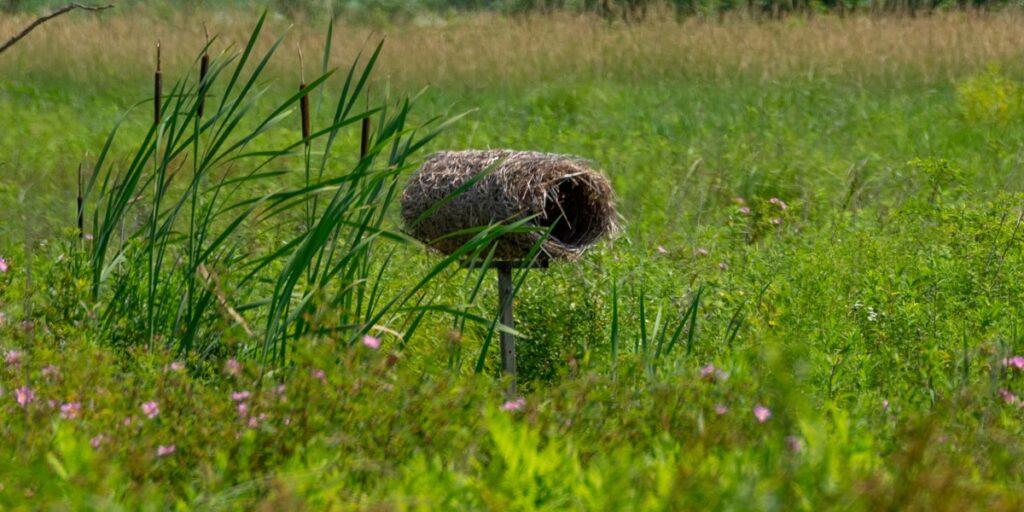
Whip out your notebook and start recording your duck nest tube findings to win a great piece of kit.
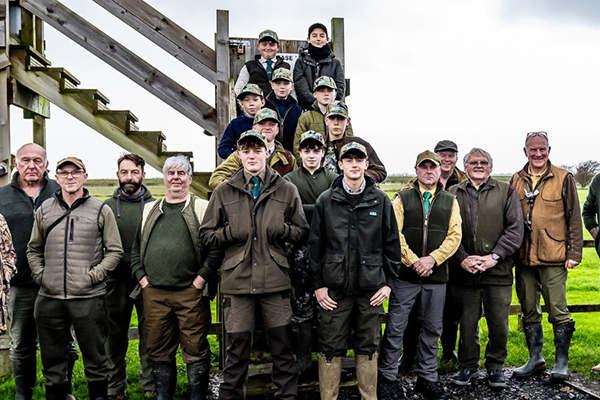
Ten keen young shooters took part in an introduction to wildfowling day hosted recently by Preston and District Wildfowlers and supported by BASC.
Sign up to our weekly newsletter and get all the latest updates straight to your inbox.
© 2025 British Association for Shooting and Conservation. Registered Office: Marford Mill, Rossett, Wrexham, LL12 0HL – Registered Society No: 28488R. BASC is a trading name of the British Association for Shooting and Conservation Limited which is authorised and regulated by the Financial Conduct Authority (FCA) under firm reference number 311937.
BASC Direct Ltd is an Introducer Appointed Representative of Agria Pet Insurance Ltd who administer the insurance and is authorised and regulated by the Financial Conduct Authority, Financial Services Register Number 496160. Agria Pet Insurance is registered and incorporated in England and Wales with registered number 04258783. Registered office: First Floor, Blue Leanie, Walton Street, Aylesbury, Buckinghamshire, HP21 7QW. Agria insurance policies are underwritten by Agria Försäkring.
If you have any questions or complaints about your BASC membership insurance cover, please email us. More information about resolving complaints can be found on the FCA website or on the EU ODR platform.